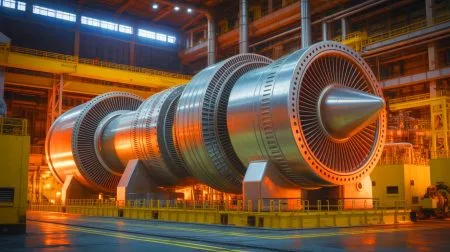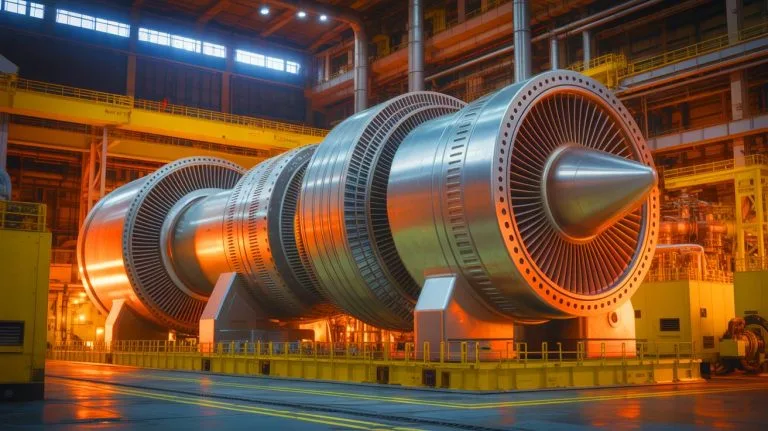| IN A NUTSHELL |
|
China has made significant strides in the field of energy technology with the rollout of its first domestically developed 110-megawatt heavy-duty gas turbine, known as the Taihang 110 or AGT-110. This milestone marks a pivotal moment for the nation’s industrial capabilities, highlighting advancements in design, materials, and testing. The Aero Engine Corporation of China (AECC) has spearheaded this project, positioning it as a cornerstone in China’s efforts to meet carbon-emission targets while enhancing its energy infrastructure. The turbine’s multi-fuel capability and combined-cycle efficiency underscore its potential to transform energy generation in China and beyond.
Commercial Rollout and Performance Claims
The Taihang 110 is described by AECC as a versatile powerhouse, capable of rapid start-up and demonstrating high combined-cycle thermal efficiency. Its design allows for operation on various fuels, including oil, natural gas, and medium-to-low calorific value gases. This adaptability makes it suitable for a range of applications, from combined heat and power generation to natural-gas peaking plants and combined-cycle power stations. The turbine can also be integrated with China’s state grid resources, such as wind, solar, and hydropower, enhancing its utility.
In terms of environmental impact, AECC claims that the 110-megawatt turbine can significantly reduce carbon emissions, potentially cutting more than 1 million tons annually compared to similar thermal power units. Its combined-cycle mode can generate over 150,000 kilowatt-hours of electricity per hour, which is enough to meet the daily electricity needs of approximately 10,000 to 15,000 households. This development reflects a broader commitment to carbon reduction and sustainable energy solutions.
AECC highlights the Taihang 110 as a symbol of industrial strength, noting that only a select few countries possess the capability to independently develop heavy-duty gas turbines. The project has benefited from the expertise of domestic industries, including aviation, machinery, and petroleum, resulting in 102 patents and breakthroughs in turbine design, materials, and manufacturing. These advancements have laid the groundwork for future innovation in the sector.
Hydrogen-Ready Research
Looking ahead, AECC is also investing in hydrogen-fueled gas turbine research. The company has reportedly achieved significant technical milestones in areas such as rapid hydrogen–air mixing, low-emission hydrogen combustion, and stable combustion control for hydrogen fuel. Although specific timelines for deployment remain undisclosed, AECC views this research as a crucial step toward lower-emission operations as hydrogen becomes more accessible and prevalent as a fuel source.
Hydrogen fuel represents a promising avenue for reducing the carbon footprint of gas turbines, potentially offering a cleaner alternative to traditional fossil fuels. AECC’s commitment to this research underscores its forward-looking approach to energy solutions, aiming to align with global trends toward sustainable and environmentally friendly technologies.
How a Gas Turbine Works
Gas turbines are a cornerstone of modern energy systems, valued for their efficiency, reliability, and versatility. These internal combustion engines convert the chemical energy of fuel into mechanical energy through a process of air compression, fuel mixing, and ignition, which produces high-temperature, high-pressure gas. As this gas expands, it spins turbine blades, generating rotational motion that can drive an electrical generator or provide propulsion for various applications.
The Taihang 110’s deployment marks a significant advancement for China’s heavy-duty gas turbine sector, transitioning from the development phase to commercial operations. With its first unit delivered for grid-connected applications, the AGT-110 exemplifies both an industrial milestone and a practical step toward a cleaner and more flexible electricity supply. Its ability to integrate with renewable energy sources further enhances its appeal as a future-proof solution for energy generation.
Implications for Global Energy Trends
The introduction of the Taihang 110 is not just a national achievement for China but also a significant event in the global energy landscape. As countries around the world grapple with the dual challenges of meeting rising energy demands and reducing carbon emissions, innovations like the Taihang 110 offer valuable insights into the future of energy production. The turbine’s ability to operate on diverse fuel sources and integrate with renewable energy systems positions it as a potential model for other nations seeking to modernize their energy infrastructures.
This development also reflects broader trends in energy technology, where efficiency and sustainability are becoming increasingly paramount. As the global community continues to transition toward cleaner energy sources, the demand for technologies that can seamlessly blend traditional and renewable energy resources will likely grow. The Taihang 110, with its innovative design and capabilities, exemplifies this convergence.
China’s rollout of the Taihang 110 gas turbine represents a significant leap in energy technology and national capability. By emphasizing efficiency and adaptability, AECC has positioned this turbine as a key player in China’s energy future, with potential implications for global energy trends. As the world continues to explore innovative solutions for sustainable energy, how will other nations adapt their approaches to meet these evolving challenges?
Did you like it? 4.5/5 (26)








Wow, 1 million tons less carbon! Is this the start of a new era for China’s energy sector? 🌍
Wow, 1 million tons of carbon emissions reduced annually? That’s impressive! 🌍
How do they ensure the hydrogen-fueled turbines are safe? Seems risky! 🔥
Can this turbine be adapted for use outside China? Seems like a fantastic tech! ⚙️
What does “multi-fuel capability” mean exactly? 🤔
Is this technology exportable or just for domestic use in China?
Finally, some good news about emissions. Thanks for sharing this! 😊
That’s a huge milestone for China! Congratulations to the team behind this! 🎉